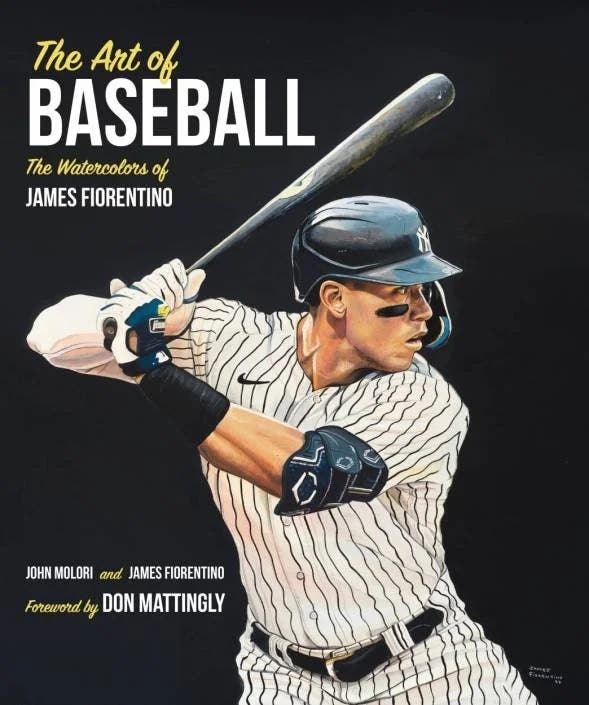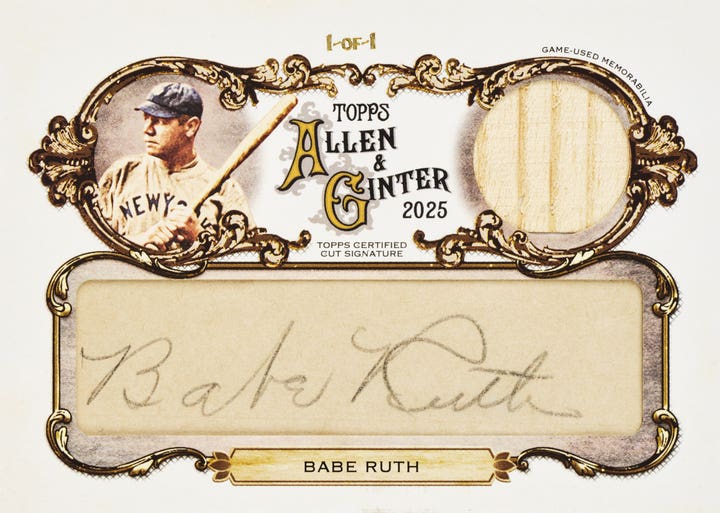News
Historic Warren Ballpark
Built Before Wrigley Field, Bisbee's Gem Still Shines Under Arizona Sun
by Gary Herron
Located in the Mule Mountains of southeast Arizona, the mining town of Bisbee plays a significant role in not only baseball history but labor unrest.
Baseball fans know a little about Arizona and the national pastime: about half of the MLB teams hold their spring training there; Reggie Jackson and Barry Bonds once played at Arizona State University; and the Arizona Diamondbacks made their debut in 1998, and won the World Series in 2001 – thanks to Luis Gonzalez’s soft liner over Derek Jeter’s head in Game 7.
But there’s a lot more to the state’s baseball lore.
Bisbee is home to Warren Ballpark, considered the oldest continuously used professional baseball venue in the country. The field was built in 1909, five years before Chicago's Wrigley Field.
There probably aren’t many – or any – Clarence Maddern collectors in the sports hobby world today, but his interesting life story began and ended in colorful Bisbee (Maddern appeared on Mother’s Cookies card releases in 1952 and ’53; he’s also No. 152 in the 1949 Bowman set, but that’s it.)
Born Sept. 26, 1921, in nearby Lowell, he began his pro career with Bisbee as a 19-year-old outfielder; the Bisbee Bees were a Class C affiliate of the Chicago Cubs and played in the Arizona-Texas League. According to his 1949 Bowman baseball card, Maddern left the University of Arizona to play for the Bees, led the league in RBIs and batted a healthy .331.
He was with the Bees again in 1942 – he saw action in 240 games between ’41 and ’42 – and also played for the Los Angeles Angels of the Pacific Coast League, the Cubs’ AA affiliate then. Following the 1942 season, he enlisted in the U.S. Army, proudly serving in the infantry 1943-45, seeing action at the Battle of the Bulge and earning battle stars.
He was back in baseball in 1946, spending time with Class AA Tulsa, the Angels (then considered triple-A) and making his big-league debut with the Cubs, going hitless in three at-bats and getting hit by a pitch in three games.
Maddern was back with the Angels in 1947, and up with the Cubs for 80 games in 1948 and 10 games in ’49, although he also wore an Angels uniform in 1949 and ’50.
He split the 1951 season between San Diego of the PCL and the Cleveland Indians, where his big-league dreams ended after just 11 games and a 2-for-11 outing at the plate.
The bulk of Maddern’s career was in the PCL; he spent 1952-54 in Seattle, played for San Francisco, Portland and San Diego again in 1955; and concluded his pro career in the International League, playing for Miami and Rochester in 1957. (There is no baseball-reference.com information on what he did in 1956.)
After his playing days were over, he returned to Bisbee and got into the insurance business. He passed away on Aug. 9, 1986, at the age of 64 and is buried in the Masonic section of Evergreen Cemetery.
Through the years, many a ballplayer's career started, and ended, in Bisbee.
Warren Ballpark has a storied past. The hometown Calumet and Arizona Mining Company, which employed the bulk of the town’s men to work in the copper mines, had it built for $3,600.
But even before the adobe park was built, and then refurbished as a Works Progress Administration (WPA) project in 1936, Bisbee has had baseball teams – mining camps back in the days had organized teams, with miners longing to get out into the fresh air and have a good time competing. Fort Bowie to the east, Fort Huachuca to the west, Tombstone to the north and Douglas to the southeast also had teams.
The opening game, on June 28, 1909, featured the El Paso Browns and the Bisbee Beautiful, won by the home team, 8-3.
They’ve been playing high school football games there as well. Bisbee’s rivalry with Douglas High is said to be the second-oldest prep rivalry in the country.
The 2019 Bisbee High Pumas baseball team went 21-8 and won 11 of 12 games played at Warren Ballpark.
Because Bisbee has become home for countless immigrants, many coming to work in the mines, soccer, rugby and cricket have also been played on the field, while Wild West shows and rodeos have also been featured in the park’s lifetime.
A 1913 postseason barnstorming tour brought the New York Giants, led by John McGraw, and the Chicago White Sox by train to Bisbee. It was part of the 13-nation world tour, and Olympic hero Jim Thorpe homered in the game – a drive that cleared the centerfield fence 440 feet away. And another legend, Bill Klem, called balls and strikes.
The ballpark hosted four exhibition games involving Major League teams between 1919 and 1940, and three of those involved head-to-head MLB teams, including one of the hottest teams of the time, the Chicago Cubs.
Team owners at the time were looking for ways to generate revenue in the offseason, and that meant taking the team on the road. Bisbee then was wealthy and politically influential, powered by Phelps Dodge and its mining, which made the town an easy first option for a touring baseball team, even more than Phoenix or Tucson.
When the Cubs made their first appearance at Warren in 1919, they were one of the biggest draws in baseball. The team was coming off its World Series loss to Babe Ruth and the Boston Red Sox just seven months earlier. The Cubs also brought pitcher Hippo Vaughn to Bisbee, after he had clinched a pitcher’s “triple crown” in 1918 by leading the National League in wins, strikeouts and ERA.
On April 12, 1919, the Cubs went up against a Bisbee homegrown team called the Warren District Grays, who, Anderson’s research notes, were leading the Cubs 8-0 at one point, having knocked Vaughn out of the game. But Chicago would rally to win, 9-8.
The Cubs also played single-game exhibitions against the Chicago White Sox at Warren Ballpark in April of 1937, 1938 and 1940.
The 1937 exhibition was a homecoming for a couple of former Bisbee Bees players who were by then on the Cubs roster.
George “Tuck” Stainback played outfield for the Bees in 1931, and would later go on to a 13-year MLB career in which he played in two World Series with the Yankees and won a ring with them in 1943. His career included four years with the Cubs.
Roy “Hardrock” Johnson was the manager for the Bisbee Bees through 1932 until the league collapsed under the weight of the Great Depression. Johnson played in the big leagues for one season, pitching for Connie Mack's last-place Philadelphia A's of 1918. His claim to fame was pitching against Babe Ruth. Johnson served as first base coach for the Cubs under manager Charlie Grimm until the early 1940s, and returned to Bisbee during the Cubs’ exhibition stops.
Not only was the 1937 game between the Cubs and White Sox notable for bringing Stainback and Johnson back before their hometown fans, the April 6 exhibition was also the very first game with Warren’s newly erected grandstands, which are still in place today.
By last count, 16 Baseball Hall of Fame inductees have played, coached or managed there.
The House of David has played there, and so did Frontier and Copper league teams, some of which included three of the infamous “Eight Men Out”: outlaw players Chick Gandil, Buck Weaver and Lefty Williams. Another guy banned from organized baseball, Hal Chase, also played there.
In April 1940, the Philadelphia A’s, managed by Connie Mack, and the Pittsburgh Pirates, with Honus Wagner, played a preseason game at Warren Ballpark. Play your cards right and Mike Anderson, who wrote “Warren Ballpark” (Arcadia, 2013), will show y you the two “sacred urinals” those guys used. The last major league exhibition game was waged at Warren in 1947.
Bisbee has served as a farm team for the Cubs (1939, 1941), Yankees (1947) and Dodgers (1950-51), as well as the Los Angeles Angels of the Pacific Coast League. All told, the Bees were in the Arizona State League (1928-30), Arizona Texas League (1931-32, 1937-39, 1940-41, 1948-50 and 1952-54); Southwest International League (1951) and Arizona-Mexico League (1955), although from 1948-55, Bisbee shared its franchise with Douglas.
“In 1947, you would’ve seen a hung-over Billy Martin,” said Anderson, an Arizona resident since 1961, giving the in-depth tour. “He tried to steal the 300-pound doorstop at the Copper Queen Hotel.” Martin played then for the Phoenix Senators that season.
In addition to Courtney, other big-leaguers who logged time playing for Bisbee teams included Johnny Keane, Roy Johnson, Syd Cohen, George Stainback, Jim Tobin, Elvin Adams, Roy Partee, Jesse Flores, Red Adams, Jim Devlin, Len Gilmore, Eddie Bockman and Bert Shepard, who made history when, having had a leg amputated following a World War II injury, became the only man with an artificial leg to pitch in a big-league game in August 1945.
The Bisbee School District took over ownership from the Warren Company, a subsidiary of Phelps Dodge Mining Corp, which had taken over Calumet, and got the renovation underway. It included a concrete grandstand with locker rooms and a corrugated iron roof; today, the school district and the Friends of Warren Ballpark, have been working to improve the park, including the installation of an electronic scoreboard – in play – in left-center field.
In 2014, Bisbee fielded a team (the Blues) in the independent Pecos League, going 33-30.
More than a century after it was originally built, Warren Ballpark hosts the annual Copper City Classic Vintage Base Ball Tournament, contested by teams in the Arizona Territories Vintage Base Ball League and a team that visits from Colorado. Anderson plays, even though he’s 65, and dons the tools of ignorance. This past April marked the 10th year for the popular tournament in which teams dress in period uniforms and play by rules adopted when Lincoln was president.
Bisbee High School students in recent years have been “excavating” portions of the park as part of the school’s Advanced Placement Environmental Science course on Fridays. (The BHS Class of 2018 paraded 36 graduates through ceremonies on stage in right field in late May – yet another great use of the ballpark for the community.)
Warren Ballpark has been featured in Arizona Highways magazine, the Tucson Weekly and on NPR’s “All Things Considered” radio program in 2003. The ballpark – where they say, “You can smell the dust” – was placed on the National Register of Historic Places in October 2010. (And beyond the left-field wall, you can hear the sound of chickens.)
But wait, there's more!
As fascinating as the baseball history is, the ballpark also played a role in America’s labor unrest of 1917. Call it the “Miner” leagues.
“This ballpark – it’s got history that goes far beyond baseball,” Anderson said, “which makes it an incredible place, because this is where the Bisbee Deportation took place in (July of) 1917.”
Squads of vigilantes went door-to-door, Anderson said, gathering striking mine workers, their sympathizers and even area tradesmen who did business with them and leading them to the ballpark.
“They had a list of people to pick up, and they also picked up people along the way,” Anderson explained. “The union was the I.W.W. (Anderson was wearing a ball cap with that logo) – Industrial Workers of the World.
“The strike was something that miners did all the time,” he said.
The women and children were released, as were any miners who promised to return to work – or who could have a respectable citizen vouch for him.
According to a University of Arizona website on the event, “The Bisbee Deportation of 1917 was not only a pivotal event in Arizona’s labor history, but one that had an effect on labor activities throughout the country.
“The mining companies controlled Bisbee, not only because they were the primary employers but because local businesses depended heavily on the mines and miners to survive. Even the local newspaper was owned by one of the major mining companies, Phelps Dodge. … On June 24, 1917, the I.W.W. presented the Bisbee mining companies with a list of demands. These demands included improvements to safety and working conditions, such as requiring two men on each machine and an end to blasting in the mines during shifts. Demands were also made to end discrimination against members of labor organizations and the unequal treatment of foreign and minority workers.
Furthermore, the unions wanted a flat wage system to replace sliding scales tied to the market price of copper. The copper companies refused all I.W.W. demands, using the war effort as justification. As a result, a strike was called, and by June 27 roughly half of the Bisbee work force was on strike.”
That led to the early-morning roundup and soon “1,186 men were loaded aboard boxcars inches deep in manure. Also boarding were 186-armed guards; a machine gun was mounted on the top of the train. The train traveled from Bisbee to Columbus, N.M., where it was turned back because there were no accommodations for so many men. On its return trip, the train stopped at Hermanas, New Mexico, where the men were abandoned. A later train brought water and food rations, but the men were left without shelter until July 14th when U. S. troops arrived. The troops escorted the men to facilities in Columbus. Many were detained for several months.
“The State of Arizona took no action against the copper companies. Approximately 300 deportees brought civil suits against the El Paso and Southwestern Railroad and the copper companies. None of the suits came to trial because of out-of-court settlements. Suits were also filed in state court against 224 vigilantes. Sadly, the only suit brought to trial ended in a “not guilty” verdict. The rest of the cases were dismissed. … Although efforts to organize pro-labor unions in Bisbee were crushed in 1917, the Deportation boosted I.W.W. efforts across the country.”
For more information about the ballpark and its preservation, visit friendsofwarrenballpark.com or see the group’s Facebook page.








